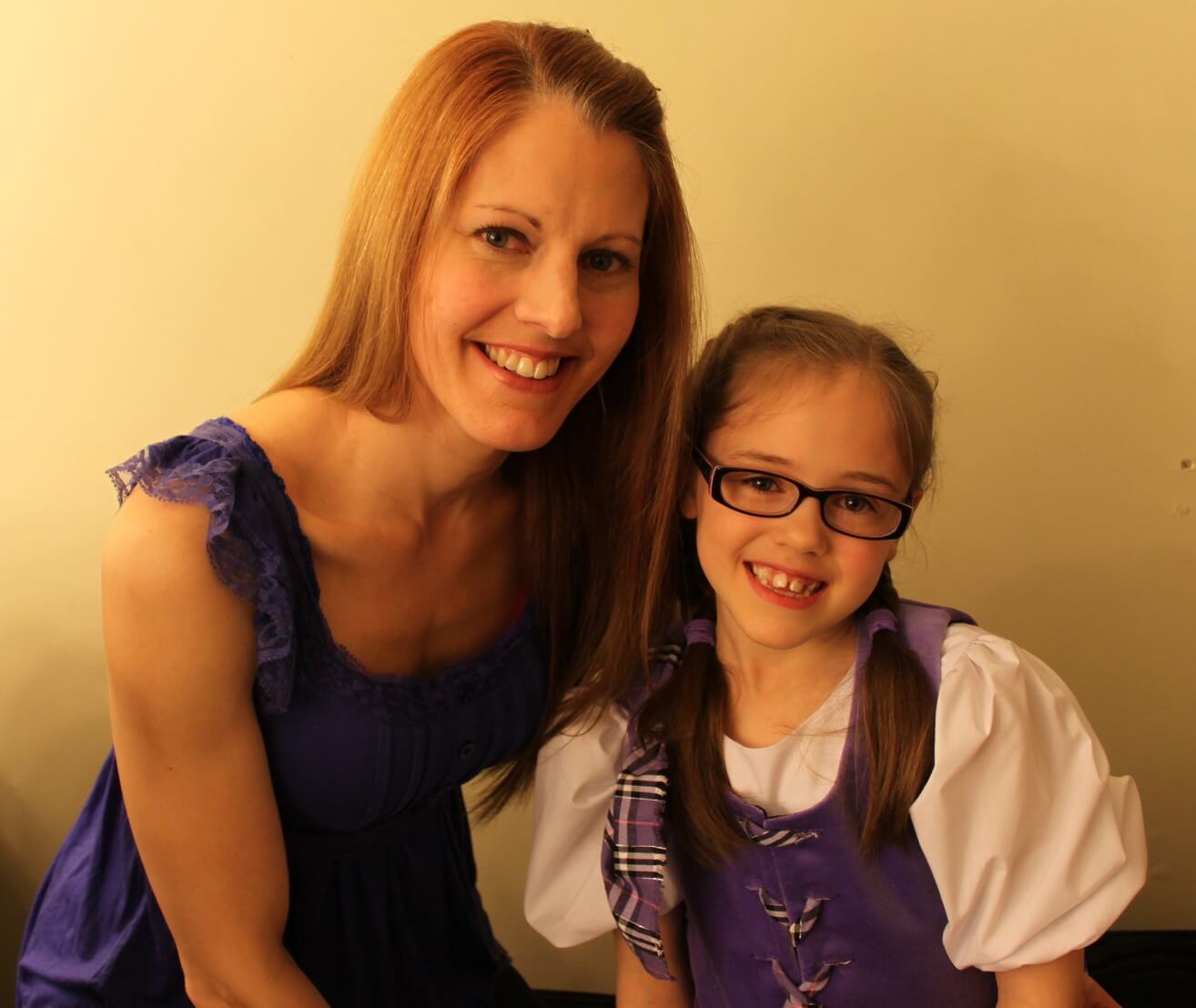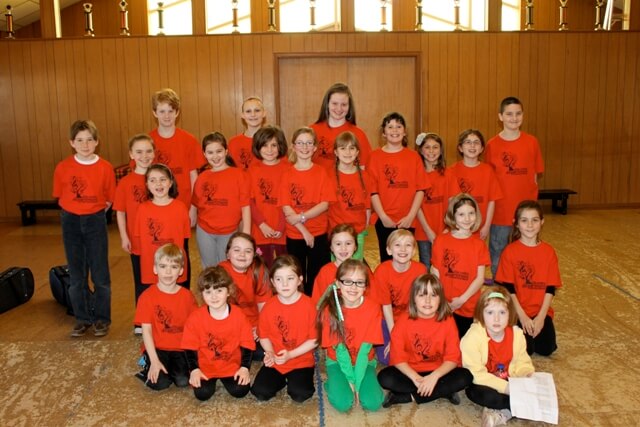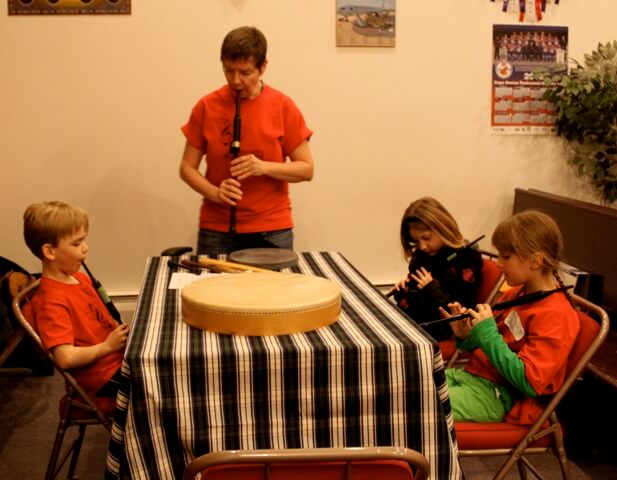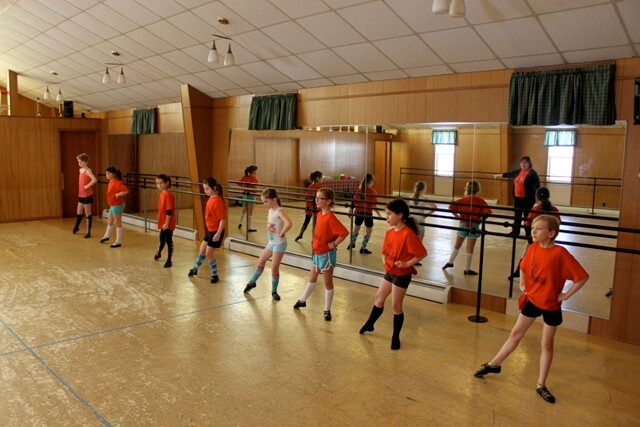Kelly MacArthur’s Cape Breton roots run deep. Daughter of a long line of Scottish descendants, she unabashedly loves every part of the Celtic culture.
As she’ll tell you in this Q+A, she runs MacArthur School of Dance, in Sydney, which held a March Break program this year called The Celtic Department that has turned into a pilot project holding workshops year-round. The next workshop is coming up – find out details at The Celtic Department’s website.
1) Tell us a bit about your background both in dance, and in teaching.
I started dancing when I was 7 years old, and I never stopped. I’ve tried many styles of dance through the years, but Celtic Dance was my favorite by far. It is the most challenging and most physical of all I’ve taken. However, I think the best aspect is the fact that it opens a lot of doors for performance opportunities when you live in Cape Breton, and the Maritimes as a whole. I love to perform, so it was the best choice for me.
I also loved the challenge, goal-setting and work involved in the competition side of Highland Dance. I feel that it shaped me as a person. When I started attending the Gaelic College in the 1980’s, Step Dance soon became part of the teaching program, and of course I couldn’t wait to learn. I love the natural aspect of the rhythm and timing of Cape Breton Step Dance – the musicality.
Highland Dance has become very structured, and aside from choreography, there is little room for interpretation. The structure is great for learning, and you can go anywhere around the world and all who dance a Highland Fling can unite. Working to improve and master is a great thing about Highland Dance, and choreography allows the creative aspect missing from the set dances. In comparison, Step Dance allows dancers to create around the music, and is slightly different in style from teacher to teacher – which is pretty neat.
I started teaching dance at the very young age of 14. I taught for many years with my own dance instructor, and when I was 16 I started teaching Winter/Fall sessions at the Gaelic College. That was 23 years ago, and I have taught there every year since. I started out teaching Highland in the youth and adult sessions, and then when they dropped Highland from the adult sessions, I began teaching Step in the adult sessions. In 1997, I bought a small house in Sydney, and I opened my own dance school in the basement. This was part-time at first, but after having my first child, I opened up more classes and it has become my full time job. Teaching is my favorite thing to do, and watching my students grow from 4-5 years of age into wonderful and well-rounded adults is the best part of it all.
2) Why did you decide to do the March Break program? What were the different subjects you included?
How did the program go? Did the kids have a good time?
In December of 2011, the Gaelic College made some big changes to their programming.
Pipe Band style piping and drumming were no longer offered for 2012, and this meant that there was no longer a formal place/instructor teaching these disciplines on the Island.
I felt that was just a shame, and decided to do something quickly before these possible students started leaving the Island to learn these programs. Highland Dance has always been part of the Highland Games and Pipe Band world, so it would also suffer great losses with these changes. Over the past five years, I have had trouble even finding a piper on the Island to play for dance performances and competitions, so I knew it could only get worse.
I had always run Dance related programs on the March Break for my students, usually involving trying other forms of dance, but this year I changed the program and added new ideals. The pilot to this new initiative ran for 2-days, and it included 6 disciplines: Highland Dance, Step Dance, Bagpiping, Pipe Band Drumming, Gaelic Song, Fiddle and Step Dance.
Highland Dance, Piping and Drumming have always run well together, as have the Fiddle and Step Dance, and Gaelic Song ties in with all five disciplines as the rhythms and tunes match with pipe tunes, fiddle tunes, highland dances, step dances and drum rhythms. We all sing, dance and play strathspeys, reels and jigs. Hornpipes and waltzes are also common for fiddle and highland dance, and also the pipes and song.
The hope for the program is to become a non-profit society. Also, as the youth become more experienced in their disciplines, the hope is to evolve the program to tie in all six disciplines around the language. This will, in turn, develop a deeper understanding and acceptance of all aspects of the culture, as well as help youth explore all the rhythms and songs in all these arts under a united format. We tried this in a small context during this first two-day program, and it was amazing how well it worked already with a mix of beginner and novice children!
The instructors worked together to choose same songs and tunes that worked with all disciplines, so the kids would learn to play, sing and dance to the same tune. It was unbelievable what was accomplished in two days, a real hope for the future once they are more advanced. Youth can explore their culture in 3 areas: recreation, performance and competition. They will get a great base, and then they can choose whichever direction/s they would like.
We also held a Ceilidh on the night between sessions, which was open to all students and their families. Colin Grant and Jason Roach played, and we did square sets, step dancing and highland dancing all evening. I would say this was a highlight for many children and their families, as it was interactive, social, and it helped apply how well all the disciplines can work together.
I sent out a parent, instructor and student feedback questionnaire, and everything that came back from all involved was very positive. The kids had a great time, the parents loved the format, and the instructors felt inspired. Everyone wanted to do it again! I can see a few areas for some changes and new ideas, but overall, it was a good start.
4) What are your plans for the coming year, and including these subjects in your curriculum?
The plan is to develop into a Non Profit Organization, and to continue in a workshop format throughout the year. For example, we hope to run a Gaelic Song class the first Sunday of each month for those interested. This would be open to the workshop students, as well as anyone interested from the community. Some students were interested in continuing disciplines, so they have contacted these instructors, or were given names of instructors in their area. The program as a whole will run in July, with hopes to run also in August, the Fall and March Break ~ in a format similar to the pilot, but with a 3rd day – we really needed a 3rd day!
(For more information about The Celtic Department’s summer workshops, check out their snazzy website here. You can also read a great piece about it in What’s Goin On, Cape Breton’s Entertainment Guide.)
More understanding of the music will just further help the children better their dance performance. One of the songs we learned at the workshop was ‘Am Pige Ruadh’, and that happens to be a tune that I already use for a Highland/Step Dance choreography with my young dancers. We use the Barra MacNeils (Lucy) version of the tune, and now the same group of dancers who learned this dance also learned to sing this in Gaelic Song class at the workshop. They were so excited, and its familiarity made it even more interesting to them. Understanding what they are dancing to will surely make it more exciting.
5) From your experiences with international media, and the fallout from your letter regarding the Gaelic College’s changes in their programming, do you think Gaelic language and subjects like highland dance, and pipe and drum bands, are important to people? Are they still relevant? Why or why not?
After I wrote the article regarding the changes at the Gaelic College and the plea for the Highland Dance competition, I learned that the Highland Dance and Pipe Band world is a strong, loyal and very supportive bunch. I guess I knew this, but it was a good reminder!
Calls, emails, messages and letters came to me from all over the world – thousands of them! Scottish societies, dancing/piping/drumming friends, Gaelic College alumni, Gaelic speakers, Gaelic community elders and interested citizens – all sent support for their belief in the culture as a whole. It was both wonderful and overwhelming at the same time. Considering the variety of people, and extension of boundaries it touched, I would say that Highland Dance and Pipe Band piping and drumming are certainly relevant and respected for the most part, and loved by many around the world. What’s that saying…’to know it is to love it’.
I could never imagine my life without being surrounded by all these aspects of the culture. I have spent my entire life learning, teaching and accepting every part of it, in a positive and enthusiastic way – without judgment. I love it all.
My MacArthurs are Gaels from the Isle of Canna, in the Western Highlands of Scotland. My Dad is from Inverness, and he grew up in a purely Gaelic speaking home for most of his young life. He doesn’t speak it now, but he often speaks his sentences in the way of Gaelic translation. I used to wonder why so many people of his generation from the mining towns (where many of the Gaels moved to work early 1900’s) arranged their sentencing/phrasing in such a way, but it wasn’t until I was much older, and around the language, that I realized that the Gaelic phrasing for some translations was the reason for this.
My mom took Gaelic lessons (I surely remember the cassettes in the car on long trips!), my younger sister and I took Gaelic at the GC for years, as did my nieces and cousins and dancers. Although I am nowhere near fluent, and I can only make small conversation, I remember every single song I learned – especially the tunes which were used for Highland Dancing 🙂 I have been teaching these to my daughter for years, and as soon as she was old enough, I started sending her to the Gaelic College for Dance and Gaelic Song. She loves song, and she is quite a nice little singer. She dances Highland & Step, and she takes piano and fiddle lessons. My baby boy has already been exposed to and loves the song, language and dance as well, and I hope he discovers a ‘niche’ within someday. I can’t think of anything more I can do at this point except to continue to keep their minds open to all of the culture, and to give them a deeper understanding, appreciation and acceptance through my own love of it all.







Kelly, I hope your classes/workshops will continue. Sin thu fhèin.
Kelly, you are a great spokesperson and certainly an asset to the Gaelic community. Keep up the great work!